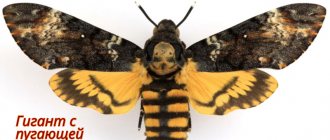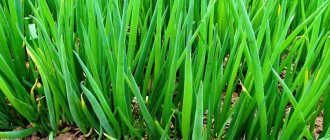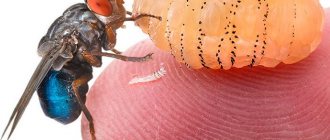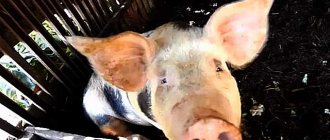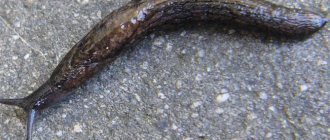Vegetable growing » Pumpkin
1
767
Article rating
Kira Stoletova
The Muscat de Provence pumpkin originated in France. It is unpretentious in care and cultivation, and with proper storage it retains its qualities until spring. The composition of nutrients in this product gives a head start to many vegetables.
Description of Muscat de Provence pumpkin
general characteristics
Butternut squash has a deep orange color inside and out and a smooth, ribbed shape. It has high productivity. The lashes grow quickly and are about 8 m in length.
The pulp of a ripe vegetable has a very dense texture, thanks to which it can be stored for a long time. The fruits are large - weigh 8-10 kg. The walls are thick, the texture is dense.
Pumpkin has a pleasant aroma and sweet taste.
The plant unravels very well on special nets or on the ground. Ripe fruits can be collected from the beginning of August until almost the first frost.
Description of the Muscat Provençal pumpkin variety
According to the description of the Muscat Provence pumpkin variety, the plant is a grass with thick, rough vines spreading along the ground. The number of lashes reaches 4-7. Their length can reach several meters.
There are tendrils on the lashes, with which the pumpkin clings to obstacles and climbs up them. Also on the stems are large five-lobed leaves, with a diameter of 5 to 8 cm. Large flowers (up to 10 cm in diameter) are yellow-white. They are bell-shaped and have 5 petals. Flowering time occurs at the end of May.
Flowering lasts several days. Pollination is carried out with the help of insects, mainly bees. In their absence, pollination is carried out artificially. Pumpkin fruits are called gourds. As a rule, 1-2 pumpkins are tied on one stem.
Description of fruits
The fruits are about 40 cm in diameter and weigh from 7 to 10 kg. They are orange-brown in color and have a rounded-flattened shape. The ribbing of the fruit is pronounced. At the stage of technical ripeness, the color of the fruit is grayish-green. The crust is strong and smooth.
The pulp of the Muscat de Provence fruit has a bright orange color, it is dense and very sweet. Pumpkin pulp contains more than 15% sugar and more than 20% starch. Pumpkin contains vitamins C, E, B1 and B2, phosphoric and silicic acid, large amounts of iron, calcium, magnesium and other trace elements.
The pulp is mainly used for making juices and purees, but it can also be consumed fresh. Muscat of Provence is a dietary product. Its pulp is recommended for use by people suffering from diseases of the cardiovascular, digestive and excretory systems.
Separately, it should be said about the beneficial properties of Muscat de Provence seed oil. The pumpkin oil they contain is used to prevent diseases of the nervous and endocrine systems.
Attention! Only ripe fruits can be eaten.
The shelf life of ripe pumpkins is about six months.
Beneficial features
According to its characteristics, the most valuable thing about nutmeg pumpkin is its low calorie content and small amount of sucrose, which is why this variety is considered a dietary product. The pulp has a delicate sweet taste and a firm texture that will be similar to young almonds.
Pumpkin is universal - it is useful both in fresh (raw) and in heat-treated form.
Daily consumption will help:
- removing excess water from the body;
- disappearance of swelling caused by excess fluid;
- beneficial effects on the nervous system (when systematically used in food);
- normalization of metabolism;
- improving digestion, because is not a contraindication for various diets;
- enriching the skin with beneficial microelements;
- Pumpkin seeds (raw) cleanse the intestines of parasites.
Benefit
Butternut squash is also very healthy, so it is recommended for use in dietary nutrition.
The benefits are as follows:
- There is absolutely no cholesterol in the fruits of nutmeg pumpkin;
- low calorie content;
- it has a diuretic effect, perfectly removes toxins and waste;
- strengthens the body's immune properties;
- due to the presence of carotene, it has a beneficial effect on vision;
- Potassium in the composition has a strengthening effect on the heart and blood vessels.
In addition to being healthy, the vegetable is also very tasty. Both adults and children enjoy eating dishes prepared from this type of pumpkin.
Butternut squash varieties
Planting a pumpkin
Use quality seeds for planting
Pumpkin de Provence ripens in approximately 110-120 days. Seeds of this variety should be purchased from trusted sources, because... You can often find a fake or low-quality product.
The package price can vary from 36 to 400 rubles (it all depends on the quality and quantity).
Usually, in early spring, seedlings are sprouted from seeds at home in order to plant them in the ground in the first half of May.
Seeds are planted in special soil:
- soil that can be bought in stores (it can be universal or you can use a mixture for cucumbers);
- You can make the soil yourself: from small sawdust, humus peat (1:2:1), you can add nitromophos to this mixture (1 tsp per 1 kg of soil).
By the time of planting, the seedlings should reach 10-12 cm and have at least 4 formed leaves. According to technology, it is better to grow seedlings in special peat pots, and then plant the plant in the ground with them.
Growing will be better in soil where nightshades grew last year. You cannot plant after similar plants: cucumbers, zucchini, onions.
The soil must be fluffed up before planting (fertilizers must be added to it in the fall). Seedlings should be planted at the rate of 1 plant per 1 m².
Care
Muscat de Provence pumpkin is very easy to grow. The plant is undemanding to heat, light, and soil composition, but you need to remember that the pumpkin needs to be fertilized. She needs additional nutrients.
Additional feeding is positive; they are effective if the plant is planted in soil poor in nutrients. Don't forget about weeding and remove weeds on time.
Excess fertilizer can harm the plant
The pumpkin weaves quickly, you need to allocate more space for it or make special sets so that it weaves upward, but not high, because... the fruits are heavy.
- After transplanting into the ground, seedlings should be watered when the outside air temperature is above 25 °C for 3-4 days. It is necessary to pour carefully - under the bush, on the ground, without pouring water on the leaves. It is best to do this in the evening so that the sun's rays do not form a crust.
- To feed, you need to use store-bought preparations, which you simply need to dilute with water at home, according to the instructions. These mixtures already contain all the necessary elements. You can use Nitroammofoska by diluting it with water (10 g per 7 liters of water).
The main thing is not to overdo it with fertilizers so that the plant does not burn from excess nutrients.
Basic rules for growing crops
The crop is suitable for planting directly in open ground. In addition, it can be grown using seedlings. Accordingly, the first option is suitable for regions with warm climates. The second is for cooler weather conditions.
You can significantly reduce the time it takes to grow a crop. If you use seedling material and use a greenhouse structure. However, for this you will have to build a fairly large greenhouse. And it will probably take up a lot of space in the garden plot.
Loamy soils with neutral acidity are well suited for the Muscat de Provence variety.
It is recommended to start preparing the site for growing vegetables in advance. About six months before planting, dig up the soil and apply organic fertilizer.
Good predecessor crops for pumpkin are onions, beets, and radishes. The presence of herbal or cereal plants will be an advantage.
Rules for planting seeds in open ground
When planting seeds directly into open ground, you must ensure the quality of the seed. But first you need to get rid of empty and defective copies.
In order to stimulate seed germination, they must be further processed. For this purpose, they undergo heat treatment for several hours. Then they are wrapped in a damp gauze cloth and stored like that for a couple of days.
After these preparatory procedures, the seeds are ready to be planted in an open area.
The sowing pattern for the crop is seventy by seventy centimeters. It is recommended to plant seeds in warm weather in the middle of the spring season.
If you follow all the recommendations for planting seeds in open ground, the first shoots will begin to appear in about ten days. As it grows, it is necessary to get rid of weak plants.
Growing using seedlings
If you want to speed up the process of fruit ripening, you can use the seedling method of growing crops. There are no particular difficulties in this process.
In the middle of spring, it is necessary to plant seed material in individual containers. The variety does not have any special requirements for soil.
Therefore, you can use a specialized soil mixture. Well, or soil from your garden plot, which will be in the permanent place where the crop grows.
After seven to ten days, the first shoots will begin to appear. Literally after fifteen days, young seedlings can be sent to the site. Next, follow all the recommendations for planting the plant in open ground.
Important advice for summer residents. Do not neglect the distance between two neighboring plants. This condition is very important for the proper growth and development of culture.
Weed removal
Basic measures for caring for pumpkins of the Muscat de Provence variety. Removing weeds, regular watering, fertilizing and other standard processes.
Since the bushes occupy a fairly large area on the site, it takes a lot of time to weed out all the weeds. When the crop's foliage becomes larger and more spreading, this procedure becomes even more difficult.
For this reason, it is recommended to systematically remove new weed plants every few days. This procedure must be carried out until the stem shoots of the pumpkin are fully formed.
It is worth noting that a flowering plant should not be disturbed. The shedding of buds of the Muscat de Provence variety can have a detrimental effect on the fruiting of the crop.
Watering rules
Despite the fact that the plant can withstand short-term drought quite steadfastly, it is worth watering the vegetables regularly. It is enough to carry out this procedure once a week. During the period when the fruits on the bushes ripen, it is worth using half as much water for irrigation. In order not to create excess moisture.
Fertilizer application
If your site has soil with a high level of fertility, the crop will not require additional fertilizer. However, if the plant is on poor soil, nitrogen and potassium complexes will need to be added. The application of organic fertilizers is also allowed.
Using a support structure
The use of a support structure in the process of growing vegetables allows you to reduce the area for growing crops. Since the stem shoots of the pumpkin are quite long, they require a lot of space if they are located on the surface of the ground.
Therefore, experienced summer residents use special designs. Or they plant the crop near the dacha fence.
Harvest and storage
Provençal pumpkin is harvested in late autumn - after all the vegetables have been collected, in the second half of October.
The very first indicator of maturity is a dry and very hard tail. The pumpkin skin becomes tough and requires considerable effort when cutting.
It must be removed before frost begins, otherwise it will not be stored (it will begin to deteriorate). You need to store the fruits in a place where it is dark and cool: the temperature should not exceed 12-14 °C and be sure to maintain air humidity - about 50-70%.
The position of the fruits should be tail up and they should not touch. Damaged ones will need to be eaten first.
Diseases and pests
According to the description of the variety, Provence pumpkin is susceptible to some diseases and pests.
- Bacteriosis is small yellowish and red spots on the surface of the leaves; when they appear, the plant begins to dry out. Bacteriosis should be removed with copper sulfate diluted with water.
- White rot is the process of destruction of the plant by covering the surface of the pumpkin with a white coating. Due to a lack of moisture in the soil, this rot penetrates from the surface into the fruit, causing harm to it. You can remove rot using crushed activated carbon (sprinkle on the affected areas) or a solution of copper sulfate.
- Powdery mildew - the leaves and fruits themselves become covered with white drops, similar to dew, because of which the pumpkin begins to dry out. The reason for everything is fungal spores; they need to be gotten rid of by treating the seedlings with a 70% solution of colloidal sulfur.
- Spider mite - it wraps itself around a plant with a sticky web, clogging its pores. The plant begins to rot. To get rid of mites, you need to prepare a tincture of garlic and onion peels and spray the pumpkin once a day.
To prevent diseases, you can use drugs that are also used for growing cucumbers, watermelons, melons, and squash.


